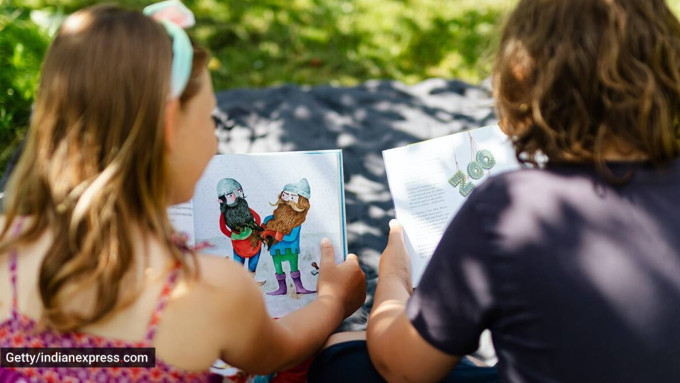Why good touch-bad touch lessons should start early, regardless of gender or communication barriers
A couple of weeks ago in Maharashtra’s Badlapur, two four-year-old girls were sexually assaulted, allegedly by a male cleaning staff, on the school premises. In another case, in Pune, an 11-year-old girl realised she had been assaulted, thanks to a ‘good touch-bad touch’ (GTBT) session at her school. According to the 2019 National Crime Records Bureau, a rape is reported every 16 minutes in India. President Droupadi Murmu, in a press statement commenting on the RG Kar rape and murder case of a young doctor, said, “The victims include even kindergarten girls. No civilised society can allow daughters and sisters to be subjected to such atrocities.”
“Things have changed a lot these days. It’s not as safe for children as it used to be,” said Dimple Laddha, a mother of two, who began explaining “Good Touch and Bad Touch” to her daughter when she was three years old, around the time she started preschool. Laddha stressed the need for early education at home in this regard, and said, “I taught them which body parts should not be touched by anyone.”

The safety of kids is paramount, and the concept of GTBT is an essential tool in safeguarding them. “The sooner we teach children to respect their bodies, the sooner they will ensure others respect their bodies too,” said Sheena Sood, consultant, psychology and counsellor, PD Hinduja Hospital and MRC, Khar, Mumbai.
What is a good touch and a bad touch?
Good touch includes expressions of love and assurance, such as a parent comforting a child. “A young child needs a touch by someone close to them as an assurance. This kind of touch is accepted and falls under the criteria of good touch,” explained professor Sharangdhar Sathe, director, School of Performing Arts at Bharati Vidyapeeth University, Pune. His parents––Dr A G Sathe and Dr Shanta Sathe–– have worked in this field for over 40 years and trained many teachers across India.
Bad touch, on the other hand, refers to unwanted or inappropriate physical contact. “When someone touches another without permission or with wrong intentions, it is a bad touch,” said Sathe. Any touch that makes a child uncomfortable falls into this category, and they should be taught to say “No” clearly and move away. Mathangi Badrinathan, a mother of a 13-year-old girl, started teaching her daughter about touch as soon as she was old enough to understand her surroundings, around two years of age.
Experts recommend teaching GTBT to children as early as three to five years. Schools should begin these lessons in kindergarten, according to Aditi Basu Roy, principal of Grads International School, Greater Noida. Roy, who has been working on child safety since 2008, explained that tiny tots can also be targeted, so early intervention is critical.
Teaching children to shout “No,” run for help, and report inappropriate behaviour is essential, according to Roy. She said that no one, apart from a parent––ideally only mothers, that too, while bathing them or in case of any physical discomfort experienced by the child––should touch a child’s private areas – the lips, chest, hips, and between the legs, and this applies equally to boys and girls. “Even doctors should examine kids only in front of the parents,” said Roy, a certified practitioner from the National Institute of Public Cooperation and Child Development (NIPCCD).
 Children should be educated about GTBT (Source: Getty Images/Thinkstock)
Children should be educated about GTBT (Source: Getty Images/Thinkstock)
The lessons are initially the same for boys and girls. However, as children grow, their bodies change, and the teaching needs to evolve accordingly. “As boys and girls develop, they begin to see differences in their bodies. This is where the distinction between good and bad touch must be reinforced,” said Sood.
Awareness campaigns by organisations like Childline India and the National Commission for Protection of Child Rights (NCPCR) have been pivotal in spreading the message about GTBT. Films such as Komal and Chuppi Todo have been used in schools to explain these concepts in a relatable way, according to Roy, who regularly organises awareness campaigns. She also said that every school has to have a child safety policy that comprises physical, mental, social, emotional, and sexual protection, a Central Board of Secondary Education (CBSE) mandate.
Why the learning should continue even when children grow up
Learning about body safety shouldn’t stop as children grow older and start developing clear differences in their bodies. Adolescents need to understand their boundaries and what is appropriate, both for themselves and others. “They too need to know where to draw the line when another person’s touch comes in,” said Sood.
For the lessons to have a lasting impact, Sathe recommended education on this subject begins at the pre-primary level. As children mature, they should receive more detailed information about their bodies, mutual respect, and appropriate behaviour. “From age 10, boys and girls should be trained by professionals––about their body parts and also inculcate respect toward each other––to ensure they receive correct and scientifically accurate information,” said Sathe.
Simply adding extra classes on the topic is not enough. According to Sood, touch education should become a lifestyle habit. Schools and homes must work together to create a mindset shift, as some people may feel that discussing such personal topics is unnecessary. “This mindset can put children in danger,” warned Sood, advocating for ongoing dialogue on personal safety.
📣 For more lifestyle news, click here to join our WhatsApp Channel and also follow us on Instagram
Disclaimer: The copyright of this article belongs to the original author. Reposting this article is solely for the purpose of information dissemination and does not constitute any investment advice. If there is any infringement, please contact us immediately. We will make corrections or deletions as necessary. Thank you.

